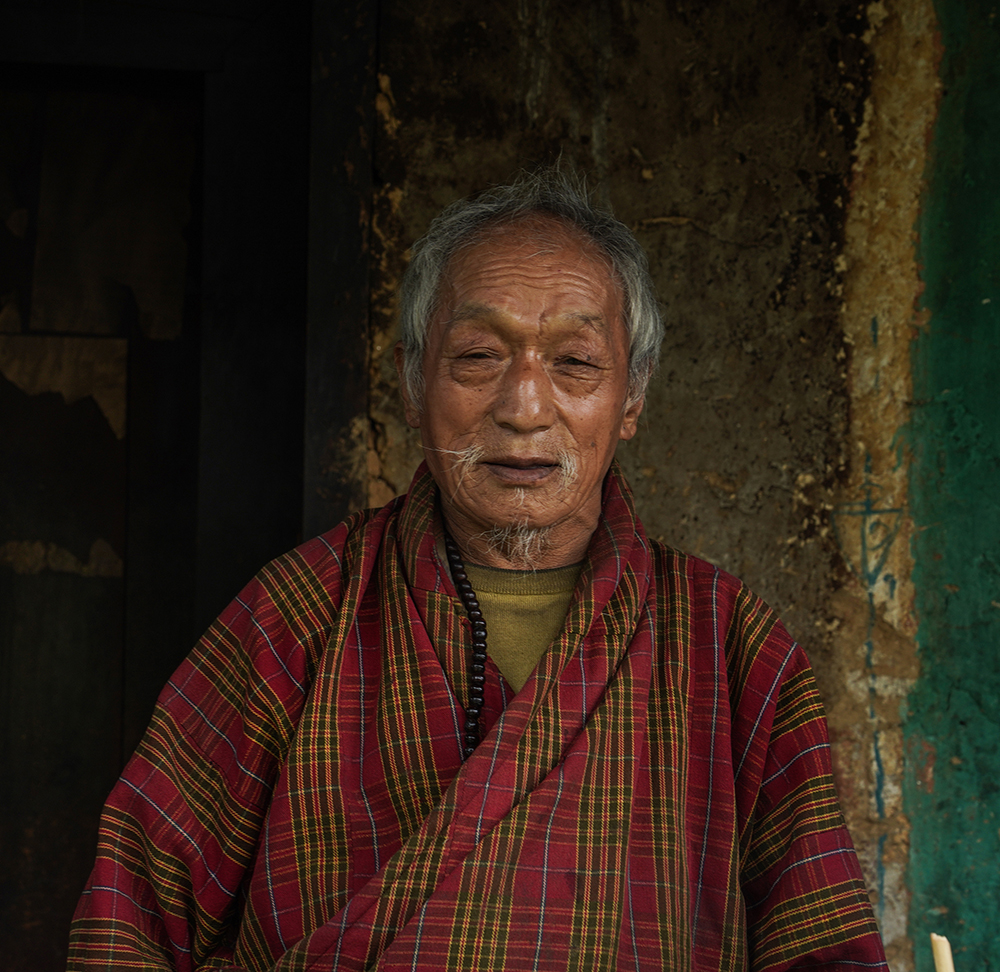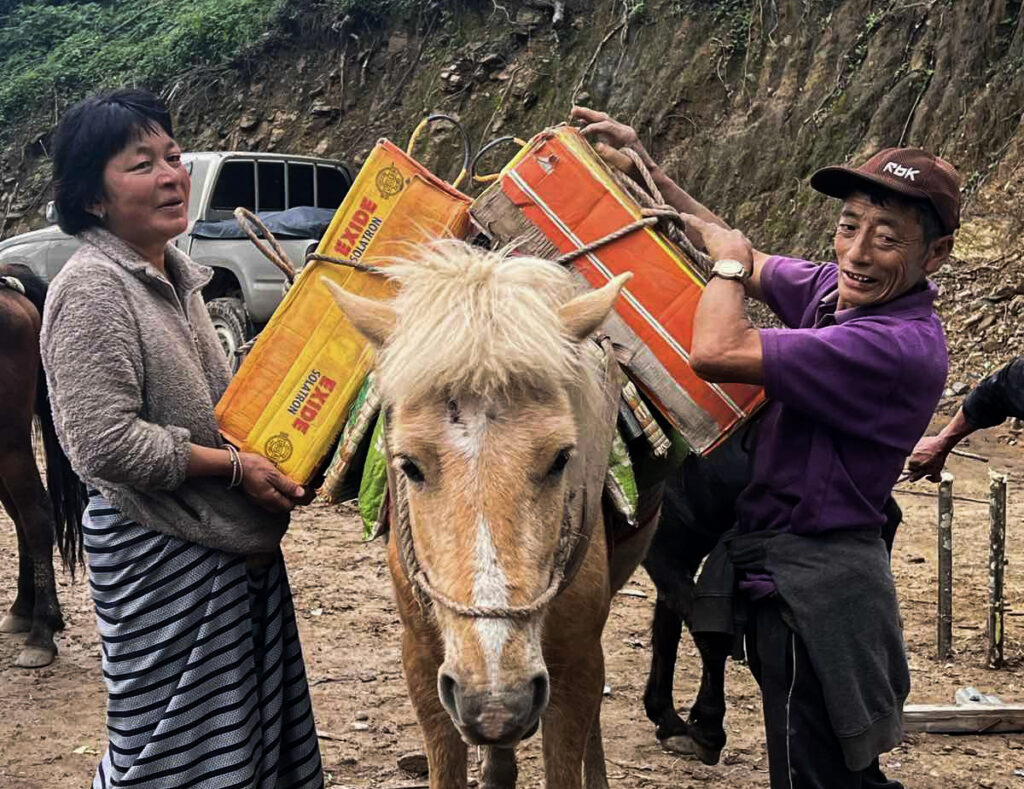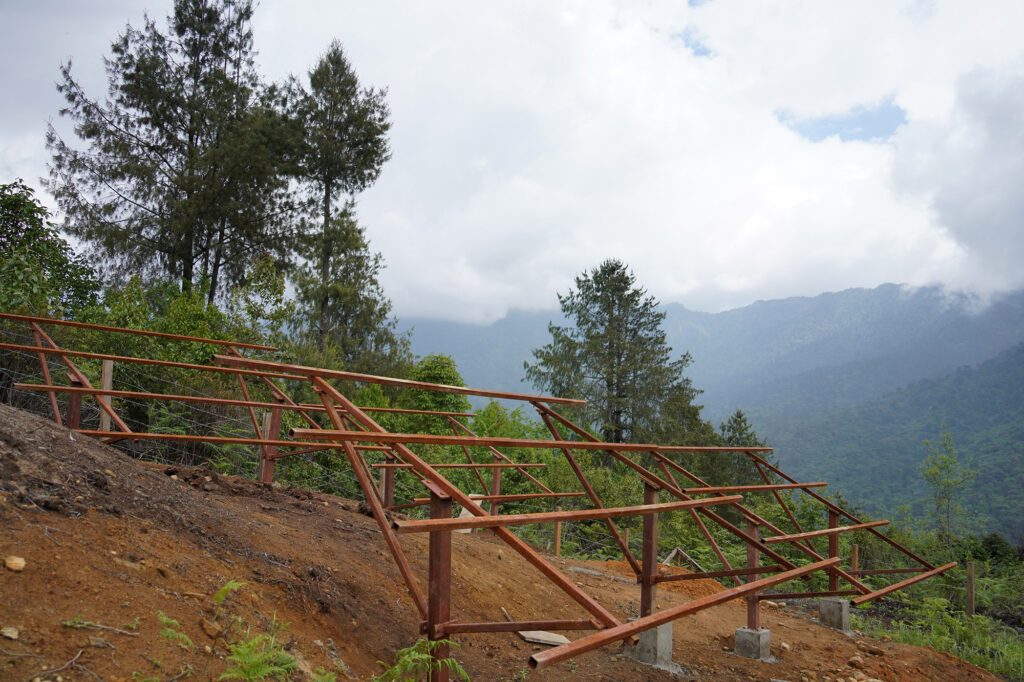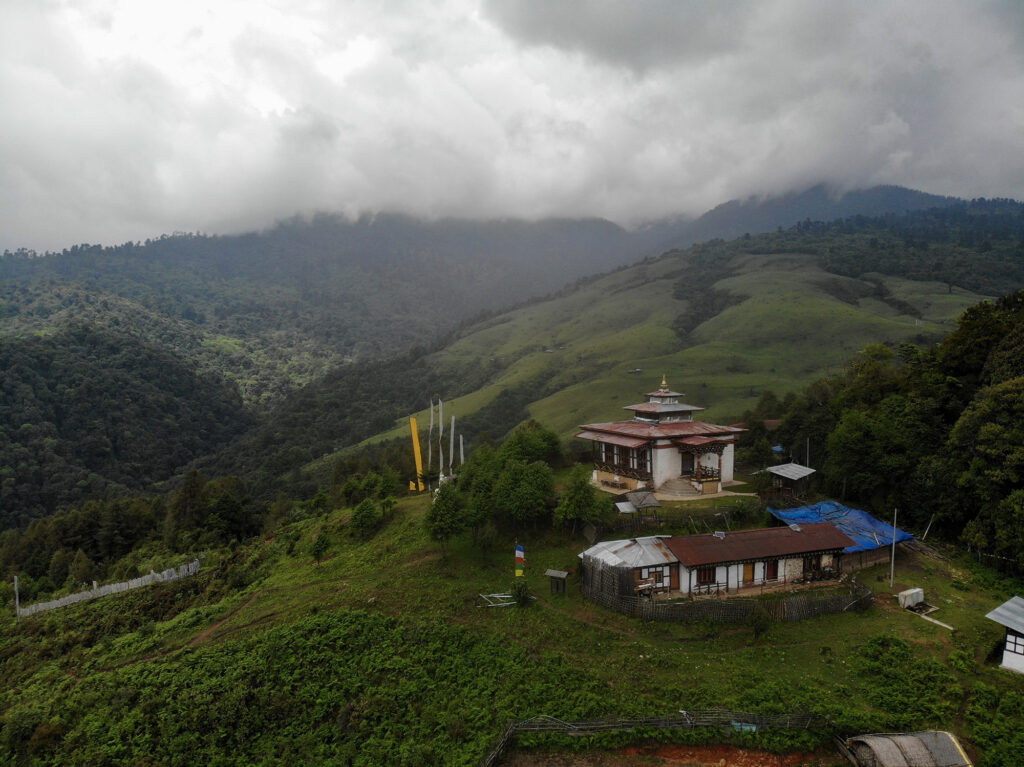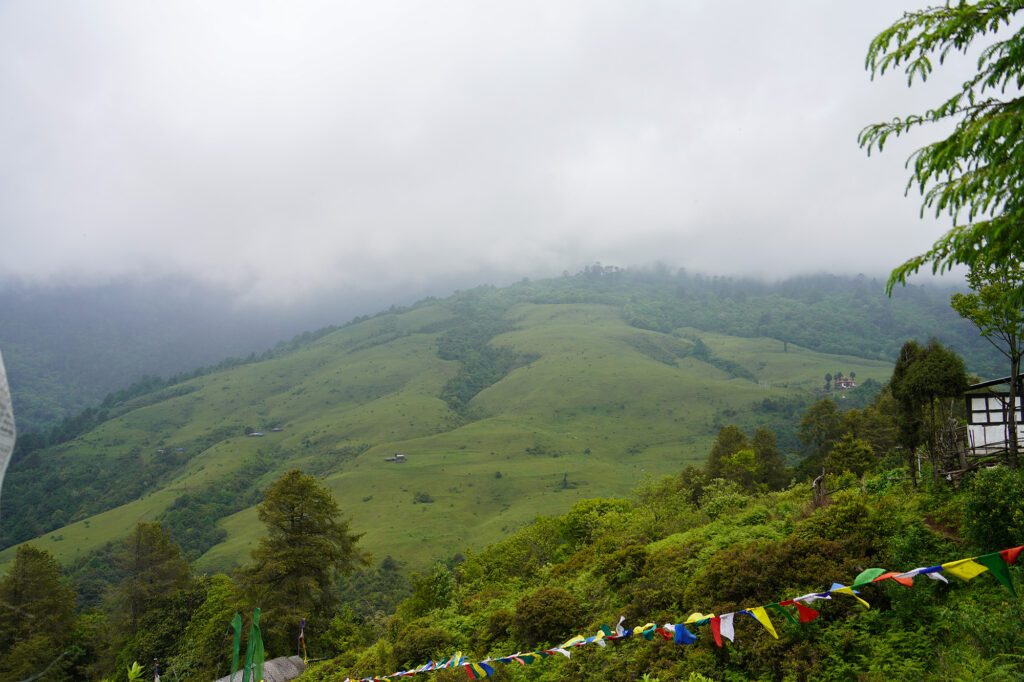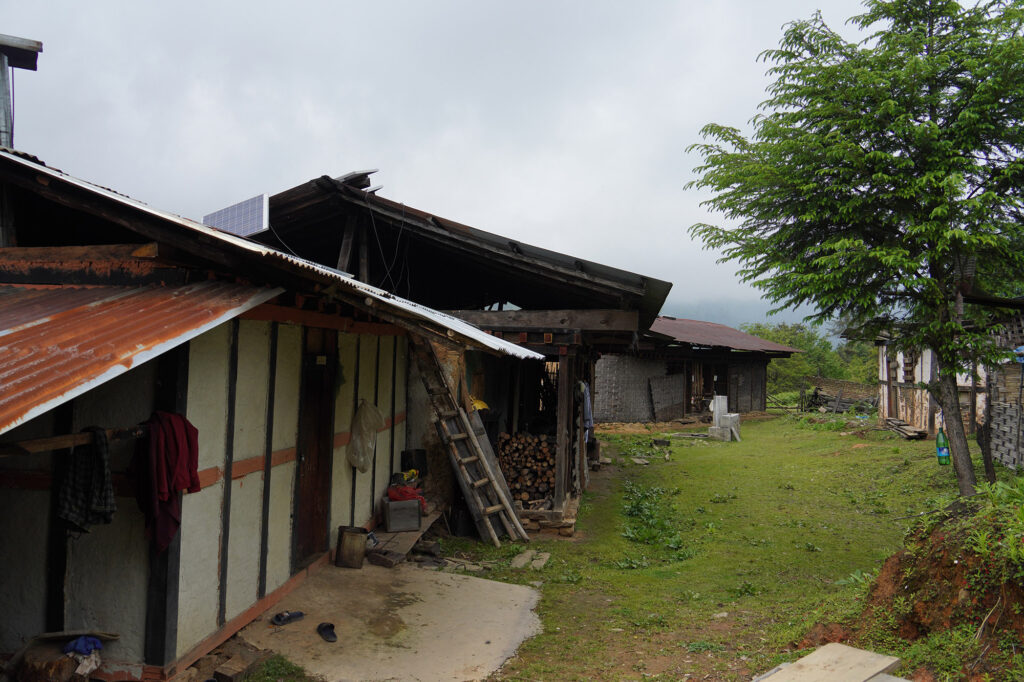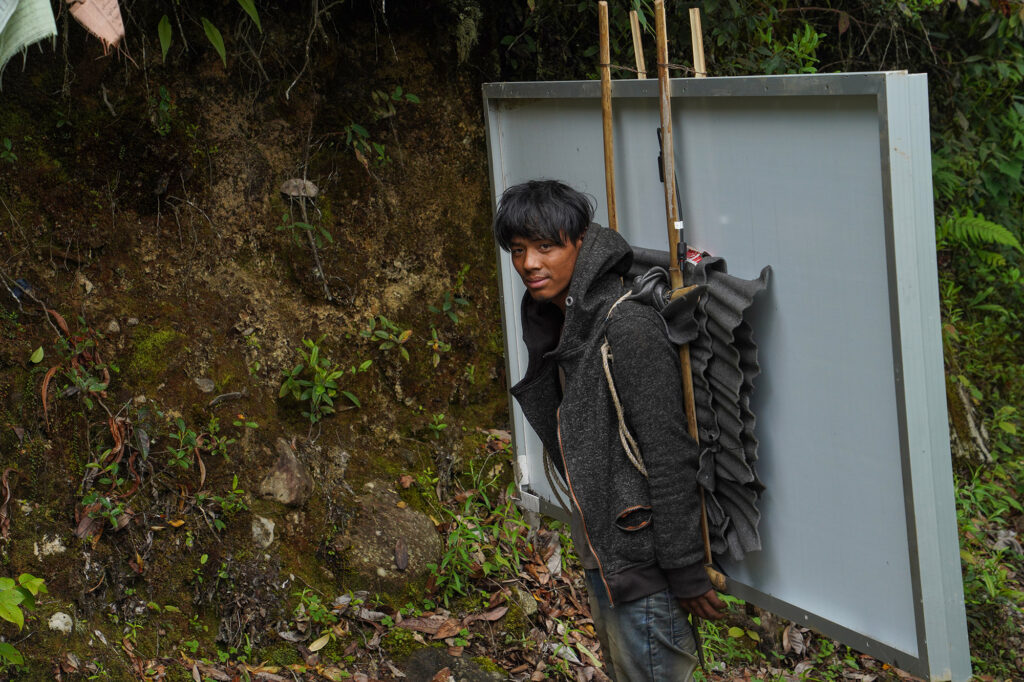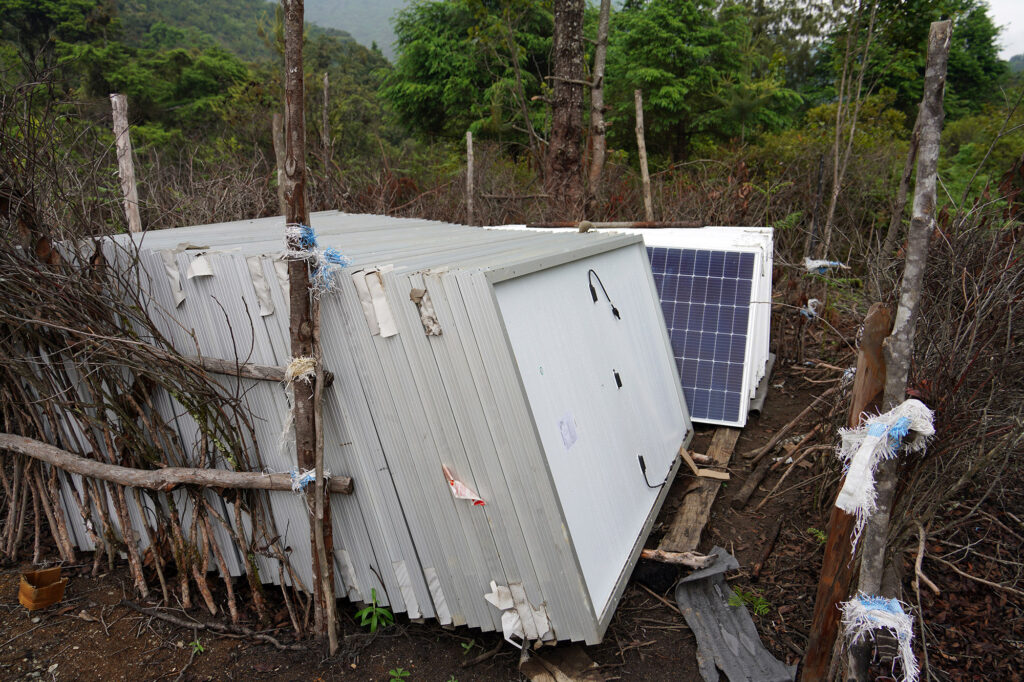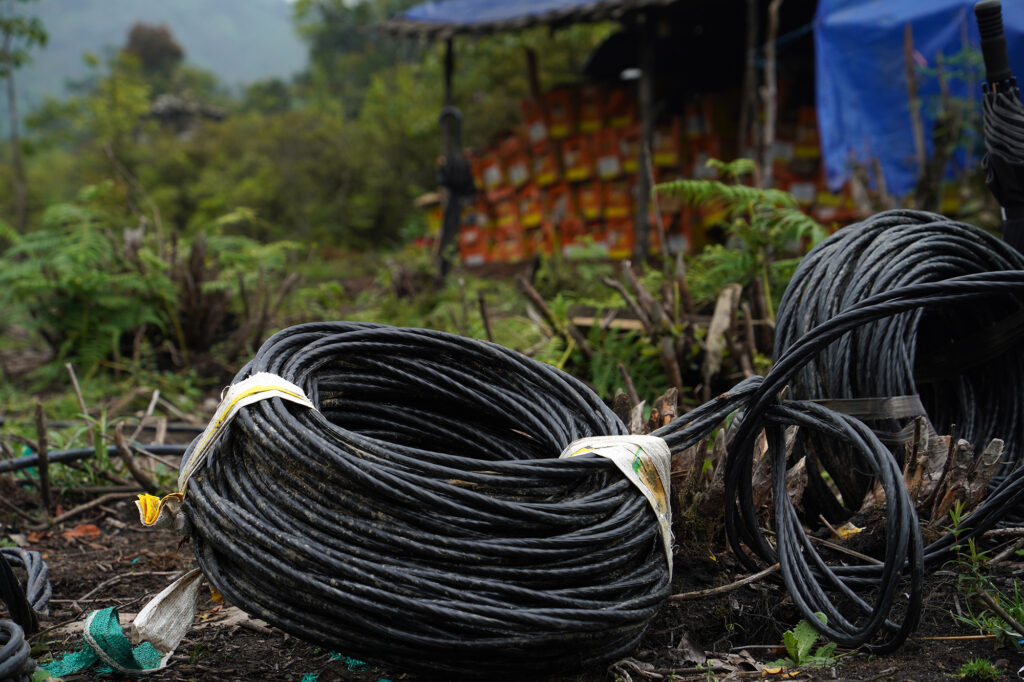May 25, 2022
Members of our team recently made the long trek to visit the solar project sites in Aja Ney, located inside Bumdeling Wildlife Sanctuary in Mongar. This remote area is about 35 km (21.75 miles) away from the Mongar highway by car, and a strenuous hike of six to seven hours on foot. It is considered one of the most sacred places of Guru Padmasambhava in eastern Bhutan.
The community of Aja Ney falls within the core zone of a protected area, and has been bearing the cost of living in such isolated villages for quite some time. For years, the community has survived off the grid, deprived of the comforts of regular electricity.
As part of a collaborative project with the Department of Renewable Energy, the Bhutan Foundation is supporting two decentralized solar power plants in two villages in Aja. A 25-kilowatt (kW) plant will serve the community of about 14 households, including the guest house at the medicinal hot stone bath facility and Pema Yangdzong monastery. An additional 5kw plant at Dungkarcholing will serve five homes and the local Dungkarchoeling temple.
Though the community in Aja Ney is small, more than 1,000 Bhutanese pilgrims visit this sacred place every year. Some community members are monks or lay monks (Gomchen) who spend their time in retreat or meditation. The ordinary people live off their cattle or on the small revenue they generate from the services to the pilgrims. The people there spend most of their time collecting firewood, especially the women, while tending to their livestock. Men or horses transport other sources of energy like fuels and essential items.
During our most recent visit with the community, many locals expressed that they are looking forward to the day when their homes and temples will be well lit. Men and women in Aja are excited to have the convenience of using modern amenities, cooking on appliances, heating their homes, or recharging their devices to stay connected with their families. They firmly believe that such support has come to Aja due to their collective merits and the blessings of Guru Rinpoche and are grateful to all the organizations supporting this initiative.
Solar power plants will significantly improve lives by providing a reliable energy source to the community. Solar power will also help reduce the need to cut trees and harvest firewood, which works to help conserve the environment and the rich biodiversity in these protected areas.
While transportation of the photovoltaic panels and the heavy batteries proves challenging for the community members along the narrow trail, the project is expected to be complete within the next few months.
Jamba (73) lives in one of the retreat centers at Pema Yangdzong. He had this to share about the upcoming solar grid system, “We are excited about this solar support in our community that will improve our overall quality of life in the retreat center. Right now, we collect firewood ourselves, and our children help us sometimes. As we get old, we won’t be able to collect firewood and need more accessible alternatives in our retreat centers. Therefore, we want to thank organizations like the Bhutan Foundation for supporting the solar lighting system for the Aja community.”
